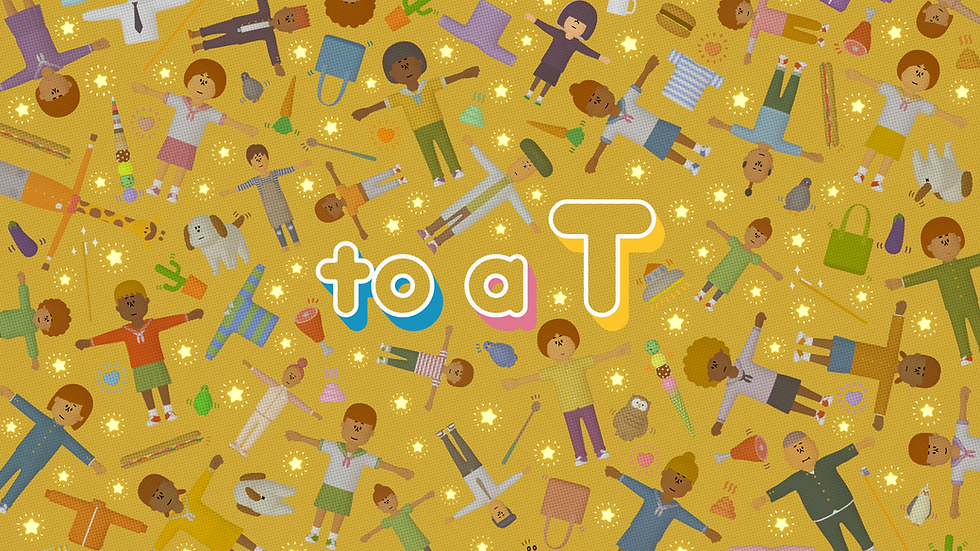29) to a T (2025)
- dpad200x
- Sep 9
- 4 min read
Updated: Sep 9

In 1999, Keita Takahashi joined Namco as an artist. As an artist, he believed his art needed to combine the practical with a bit of whimsy and humor. It was while working as an artist at Namco, specifically on a game titled Action Drive, that Takahashi came up with the characters of a King, Queen, and Prince of the cosmos. His ideas involved the Queen being kidnapped by agents on Earth, and the lazy King would send the Prince to rescue her using his hammer shaped head to stun humans and then "drive" them around by placing a steering wheel on the back of their head. Though his ideas were rejected by the project leader, and Action Drive was eventually cancelled, the initial seed for a different game was planted. Takahashi continued to think of game ideas, and he came across the idea that the ordinary world could be made interesting with only a small change in perception, and that a game could be fun without the need for violence. These ideas eventually combined, leading to the development and creation of Katamari Damacy, which became a surprise hit for the company.
Takahashi would go on to leave Namco in 2010, citing creative differences and changes within the company after it merged with Bandai. He and his wife, Asuka Sakai, formed a new development company named Uvula. Development on to a T began as early as 2022, when the game was first announced. It was originally intended to be a PS4 exclusive published by Sony and co-developed by Santa Monica Studio, though this eventually fell through as Sony ceased involvement, and Annapurna stepped in to publish instead. The game received a release date trailer in early 2025, featuring an original song from Rebecca Sugar, the creator of Steven Universe. The game was released a few months later.
I know I've already spent a good amount of time going over a much truncated history of Takahashi and his work, but I feel it necessary, if not fascinating, to observe the journey that led to one of the oddest game concepts I've seen for quite some time. This is saying a lot, as I've previously discussed a game in which you manage a mascot agency out of a love motel while driving around in a flying truck. To a T sees us take on the role of a 13 year old who is in a constant T pose as we go about their daily life. We start each day by getting dressed, eating breakfast, brushing our teeth, and going to school, seeing the challenges they face being the only person T-posing in a small town. Minor things, such as eating cereal, are made difficult due to our T-posing, and going to bathroom requires help from our loyal dog companion.

The game is not hard by any real measure, and doesn't include any fail states. It's mostly just a slice of life simulation game with an admittedly bizarre premise. Coming from the mind behind Katamari Damacy, the world is predictably strange, with a unique charm and humor all its own. You spend most of your time running around and exploring the small town and interacting with its inhabitants, which include giraffe restaurateurs, a ladybug that runs the local newspaper, and a school teacher who awkwardly tries to flirt while giving a television interview. It's a world that either draws you in or pushes you away with its odd charm and humor which, for me, works. All of the dialogue is cleverly written, and the fewer questions you ask, the better off you'll be.
Our central story revolves around our teenage protagonist being bullied at school for being different, though he bullies have a change of heart when, during a freak accident, we accidentally fly to save one of them from danger. The story then becomes trying to learn how to fly and eventually learning the secret behind our character's origin. Each chapter is separated with an opening and ending musical bit, making it feel as though we're playing episodes of a children's show. Suitably, I think the game works best with that in mind, as it's the kind of game I feel would be great to play with a child. The simple gameplay and cute artstyle, along with its sense of humor, work well in this regard. The game lacks voice acting, but works well for reading along.

The central message, which the game admittedly bashes you over the head with, is one of accepting and celebrating the ways in which people are different. Some may view this messaging as woke, which I feel has become a catchall buzz word for teaching children about basic human decency. The game is a not so subtle exercise in empathy that uses absurdist humor to drive its message home. I can certainly admit that the game is short, not challenging, and struggles a bit to find its target audience, but I enjoyed my brief time in its charming world. It's a game that certainly stands out, though it struggles to be called memorable.



Comments